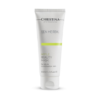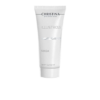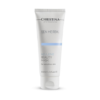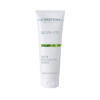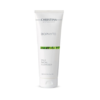
Clay masks have become a skincare staple for good reason – they’re one of the most effective treatments for deep-cleaning pores, controlling oil, and revealing smoother, brighter skin. Whether you’re dealing with acne, excess shine, or dull complexion, learning how to properly use a clay mask can transform your skincare routine.
What Is a Clay Mask?
A clay mask is a skincare treatment made from natural clays like bentonite, kaolin, or French green clay. These minerals work by drawing out impurities, absorbing excess oil, and gently exfoliating dead skin cells. Different clay types offer unique benefits, making them suitable for various skin concerns and types.
Benefits of Using Clay Masks
Clay masks deliver impressive results when used correctly:
Deep Pore Cleansing: Clay has a negative electrical charge that attracts positively charged toxins, dirt, and oil, pulling them out from deep within your pores.
Oil Control: The absorbent properties of clay help regulate sebum production, making it ideal for oily and combination skin types.
Improved Skin Texture: Regular use helps smooth rough patches and minimize the appearance of large pores.
Acne Prevention: By removing pore-clogging debris and bacteria, clay masks can help prevent breakouts before they start.
Brighter Complexion: Clay gently exfoliates, revealing fresh skin underneath and promoting a natural glow.
Step-by-Step Guide: How to Use a Clay Mask
Step 1: Start with Clean Skin
Always begin with a freshly cleansed face. Use your regular cleanser to remove makeup, sunscreen, and surface dirt. Pat your skin dry with a clean towel – your face should be damp but not dripping wet, as this helps the mask spread more easily.
Step 2: Apply the Mask Evenly
Using clean fingers, a brush, or a spatula, apply a thin to medium layer of clay mask across your face. Focus on problem areas like the T-zone (forehead, nose, and chin) where oil and congestion tend to accumulate. Avoid the delicate eye area and your lips, as these areas are too sensitive for clay’s drying effects.
Pro tip: Apply a thicker layer on particularly oily or congested areas while keeping it thinner on drier parts of your face.
Step 3: Time It Right
This is crucial – don’t let the mask dry completely. Leave it on for 5-10 minutes for sensitive or dry skin, and 10-15 minutes maximum for oily or normal skin. The mask should still feel slightly damp when you remove it. Allowing clay to dry completely can over-strip your skin, causing irritation and excessive dryness.
Step 4: Remove Gently
When time’s up, wet your hands and gently massage the mask in circular motions to loosen it. This provides gentle exfoliation. Then rinse thoroughly with lukewarm water, ensuring no residue remains. Pat your face dry with a clean towel.
Step 5: Follow with Hydration
Immediately after removing the mask, apply a hydrating toner or essence, followed by your favorite serum and moisturizer. This step is essential because clay can be temporarily dehydrating, and your skin needs moisture replenishment to maintain its balance.
How to Use Clay Masks for Different Skin Types
For Oily Skin
Best Clay Types: Bentonite clay, French green clay
Application Method: Apply a medium to thick layer across the entire face, paying special attention to the T-zone where oil production is highest. You can use the mask on your whole face without worry about over-drying.
Timing: Leave on for 10-15 minutes, but remove while still slightly damp.
Frequency: 2-3 times per week for optimal oil control.
Aftercare: Use a lightweight, oil-free moisturizer. Even oily skin needs hydration to prevent compensatory oil production.
Additional Tips: Mix your clay with witch hazel or tea tree oil for extra oil-controlling and antibacterial benefits. Focus on consistency rather than leaving the mask on longer.
Best Clay Masks for Oily Skin:
1. L’Oréal Paris Pure Clay Detox Mask This budget-friendly option contains charcoal and three types of clay to deeply cleanse and mattify. It effectively draws out impurities and controls shine without over-drying, making it perfect for daily oily skin concerns. The texture is smooth and easy to apply.
2. Aztec Secret Indian Healing Clay A cult favorite made from 100% pure bentonite clay, this powerful powder mask requires mixing with apple cider vinegar or water. It provides intense deep-pore cleansing and oil absorption, making it ideal for very oily skin and those dealing with stubborn blackheads and congestion.
3. Origins Clear Improvement Active Charcoal Mask This creamy mask combines white China clay with bamboo charcoal to refine pores and absorb excess oil. It’s effective yet gentle enough for regular use, and the cooling sensation makes it a spa-like experience. Great for oily skin that still needs some nourishment.
For Dry and Sensitive Skin
Best Clay Types: Kaolin clay (white or pink), rhassoul clay
Application Method: Apply a thin layer only to areas that need it, such as the T-zone or areas with blackheads. Avoid applying to already dry cheeks or areas prone to flakiness.
Timing: Keep it brief—5-8 minutes maximum. Remove as soon as you see the mask starting to dry at the edges.
Frequency: Once every 1-2 weeks, or use as a targeted spot treatment only.
Aftercare: Immediately apply a hydrating toner, followed by a rich, nourishing moisturizer or facial oil to lock in moisture.
Additional Tips: Mix your clay mask with honey, yogurt, or avocado to add moisture while cleansing. Never let the mask dry completely, as this can worsen dryness. Consider using clay masks only on your T-zone while applying a hydrating mask to your cheeks.
Best Clay Masks for Dry and Sensitive Skin:
1. Ren Clean Skincare Rosa Centifolia Cleansing Clay Mask This gentle pink clay mask is enriched with rose extracts and rose oil to soothe and hydrate while cleansing. It’s specifically formulated for sensitive skin, removing impurities without stripping moisture. The calming fragrance and creamy texture make it a luxurious yet gentle option.
2. Glossier Mega Greens Galaxy Pack A hybrid clay-cream mask that combines kaolin clay with nourishing ingredients like marula oil and vitamin E. It gently detoxifies without drying, leaving skin soft and comfortable. The cooling effect soothes sensitive skin, making it perfect for those who find traditional clay masks too harsh.
3. Burt’s Bees Sensitive Facial Cleansing Towelettes with Cotton Extract While not a traditional clay mask, Burt’s Bees offers a gentle kaolin clay mask formulated specifically for sensitive skin. It uses the gentlest white kaolin clay with cotton extract to soothe and calm while providing minimal but effective cleansing for delicate complexions.
For Combination Skin
Best Clay Types: French green clay, kaolin clay, rhassoul clay
Application Method: Use a multi-masking technique—apply a thicker layer to oily areas (T-zone) and a thinner layer or skip entirely on dry areas (cheeks, around the mouth).
Timing: 10-12 minutes for oily zones, but watch dry areas carefully and rinse those sections first if they start to feel tight.
Frequency: 1-2 times per week, adjusting based on how your skin responds.
Aftercare: Use different moisturizers if needed – a lighter gel for oily areas and a richer cream for dry patches.
Additional Tips: Multi-masking is your best friend. You can even use a clay mask on your T-zone simultaneously with a hydrating mask on your cheeks. Pay attention to seasonal changes, as combination skin often becomes oilier in summer and drier in winter.
Best Clay Masks for Combination Skin:
1. Kiehl’s Rare Earth Deep Pore Cleansing Masque This mask features Amazonian white clay that balances combination skin beautifully. It draws out impurities and reduces shine in the T-zone while being gentle enough not to over-dry cheeks. The creamy, non-drying formula makes it ideal for balancing different skin zones.
2. The Body Shop Himalayan Charcoal Purifying Glow Mask This detoxifying mask combines bamboo charcoal with green tea extract to purify oily areas while keeping skin hydrated. It’s particularly effective for combination skin as it targets congestion without causing tightness or dryness on normal zones.
3. Vichy Pore Purifying Clay Mask Formulated with two types of mineral clay and Vichy volcanic water, this mask refines pores and mattifies without disrupting skin balance. It’s dermatologist-tested and works well for combination skin that needs purification in some areas while maintaining comfort in others.
For Mature Skin
Best Clay Types: Kaolin clay, rhassoul clay (gentler options that won’t over-dry)
Application Method: Apply a thin to medium layer, avoiding areas with fine lines or dry patches where clay might settle into creases.
Timing: 8-10 minutes. Mature skin tends to be drier, so don’t let the mask fully dry.
Frequency: Once a week to maintain clarity without compromising moisture.
Aftercare: Focus on intense hydration and nourishment. Use a hydrating essence or serum with hyaluronic acid, followed by a rich anti-aging moisturizer with peptides or retinol.
Additional Tips: Mix clay with rose water, honey, or hyaluronic acid serum to boost hydration while cleansing. Consider using clay masks primarily on your T-zone while using anti-aging masks on the rest of your face. Clay can help with dullness and uneven texture, revealing brighter, more youthful-looking skin when used appropriately.
Best Clay Masks for Mature Skin:
1. Caudalie Instant Detox Mask This luxurious mask combines pink clay with grape extracts and essential oils to gently purify while providing antioxidant benefits. It brightens dull, mature skin and refines texture without emphasizing fine lines. The cream-gel texture is comfortable and doesn’t feel drying on aging skin.
2. Fresh Umbrian Clay Purifying Mask This cult-favorite mask uses mineral-rich Italian clay combined with chamomile and lavender to gently detoxify mature skin. It improves skin clarity and radiance while being gentle enough not to accentuate wrinkles. The nourishing formula leaves skin feeling soft rather than tight.
3. Estée Lauder Advanced Night Micro Cleansing Balm While primarily a cleansing balm, this product contains purifying clay that works gently on mature skin. It can be used as a brief mask treatment to clarify without stripping. The formula includes skin-renewing ingredients that support the needs of aging skin while providing gentle detoxification.
How Often Should You Use a Clay Mask?
Frequency depends on your skin type:
- Oily skin: 2-3 times per week
- Combination skin: 1-2 times per week
- Dry and sensitive skin: Once every 1-2 weeks, or use as a spot treatment only
- Mature skin: Once a week
Overusing clay masks can disrupt your skin’s natural moisture barrier, so consistency matters more than frequency.
Choosing the Right Clay for Your Skin Type
Different clays serve different purposes:
Bentonite Clay: Highly absorbent and powerful for oily, acne-prone skin. Best for deep detoxification.
Kaolin Clay: Gentle and suitable for sensitive or dry skin. Provides mild cleansing without excessive drying.
French Green Clay: Moderately absorbent, ideal for combination skin. Rich in minerals that nourish while cleansing.
Rhassoul Clay: Conditioning and gentle, works well for all skin types and is especially good for maintaining moisture.
Common Mistakes to Avoid
Letting It Dry Completely: This is the number one mistake. A fully dried mask pulls too much moisture from your skin.
Using It Too Often: More isn’t better with clay masks. Stick to your skin type’s recommended frequency.
Skipping Moisturizer: Always follow up with hydration to prevent your skin from overproducing oil in response to dryness.
Applying to Broken Skin: Avoid using clay on active acne with open wounds or extremely irritated skin.
Using the Wrong Clay Type: Match your clay to your skin type for best results and to avoid irritation or excessive dryness.
DIY Clay Mask Enhancement Tips
Boost your clay mask’s effectiveness by mixing it with complementary ingredients:
- Apple cider vinegar: Balances pH and adds antibacterial properties (dilute for sensitive skin)
- Honey: Adds moisture and antibacterial benefits
- Aloe vera gel: Soothes and hydrates
- Tea tree oil: Targets acne-causing bacteria (use sparingly, 1-2 drops only)
- Rose water: Calms inflammation and adds hydration
- Yogurt: Provides gentle exfoliation and moisture
- Avocado: Deeply nourishes dry skin
Clay masks are a powerful addition to any skincare routine when used correctly. The key is finding the right clay for your skin type, applying it properly, and never letting it dry completely. With consistent use at the appropriate frequency, you’ll notice clearer pores, reduced oil production, and a brighter, more refined complexion. Remember to always follow with proper hydration, and your skin will thank you with a healthy, natural glow.




